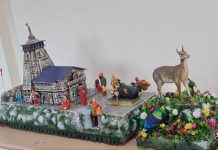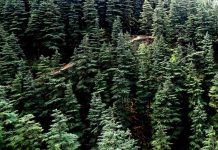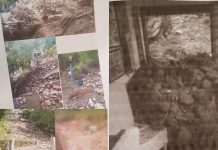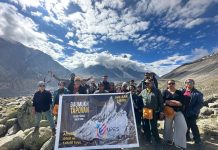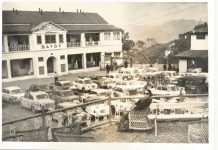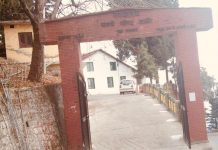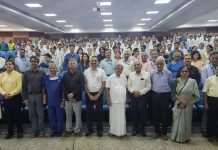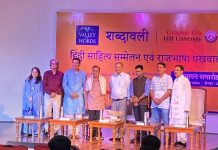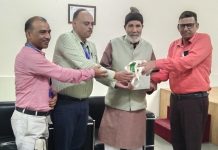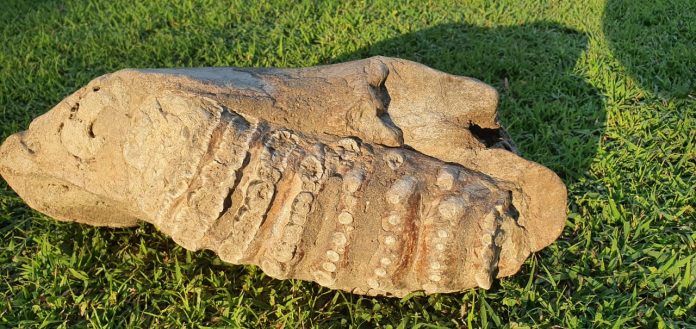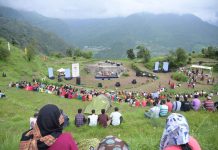Dateline Saharanpur: 1830’s Mussoorie. Two unlikely neighbours, Dr Hugh Falconer, a botanist setting up the the famous Saharanpur Botanical Garden Royal (he was here to start Mussoorie’s Company Bagh. Two of his Ginseng trees burst out in blossom to this day) and the other an engineer, Proby Cautley of the Ganga Canal fame who built the Ganga Canal which turned the Doab from a famine prone region to a Garden of Plenty. This tale is about their singular hobby that saw them excavate fossils along the length and breadth of the ancient Siwalik Ranges. You will find the results of their stellar efforts on display in the Calcutta Museum.
Retracing their footsteps, while carrying out special survey during a Wildlife census, team lead by V. K. Jain, Chief Conservator of Forest, Saharanpur Circle and Dr. I. P. Bopanna, landscape co-ordinator, WWF, India, accompanied by Devvrat Panwar, Senior Programme Officer and others, chanced upon a fossil of jaws of a young Elephant calf discovered in Badshahibagh area of Siwalik.
The present fossil specimen is from the DhokPathan formation of the Siwalik of the extinct Stegodon Elephant species. The sandstone embedded on the fossil is medium grained, salt and pepper in nature and clearly shows nine well developed ridges on its surface view, with the length of the molar being nearly 24 cms. The enamel of the molar is very thick.
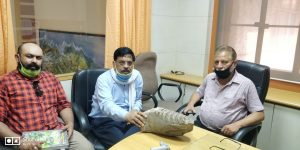
The sample was shown to Dr. R. K. Sehgal Scientist at Wadia Institute of Himalayan Geology, Dehradun while taking the expert opinion of Dr. A. C. Nanda. Experts confirm that the specimen is at least 50 lakh years ( 5-10 million years old). This fossil belongs to Miocene era when Elephants had tusks that were more than 10 feet long.
Sharing the images of this precious find is avid photographer and wildlife specialist Sanjay Kumar IAS, Commissioner Saharanpur, who congratulated the team stating: ‘A huge congratulations to Conservator Forest, Saharanpur V.K. Jain and P. Bopanna from World Wildlife India.’
Unravelling these finds confirms the belief that half a crore years ago the Doon valley was a forty five miles long and fifteen miles wide fresh-water lake, where alongside in the Siwaliks, roamed pre-historic life forms— dinosaurs, the woolly mammoth; saber-tooth tigers and three-toed ancestors of the horse.





